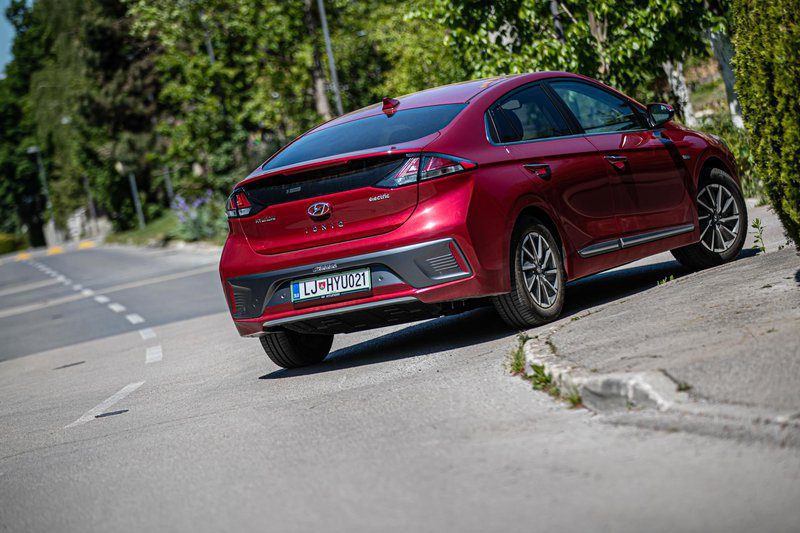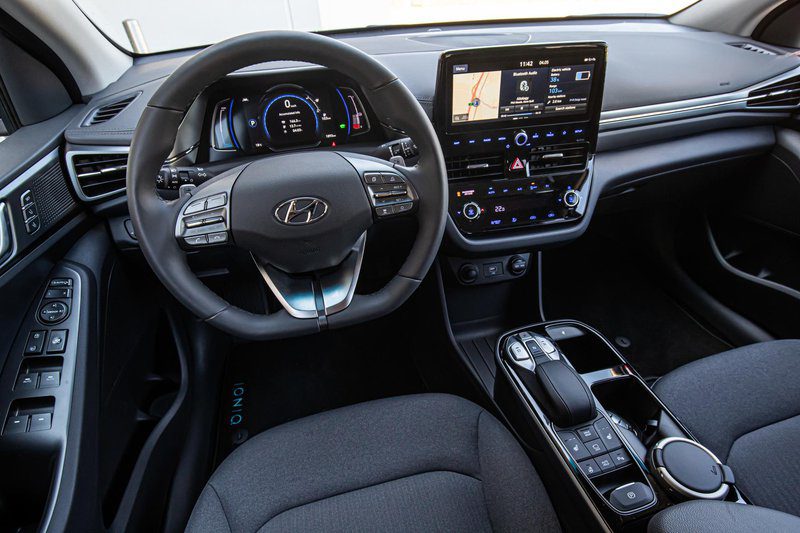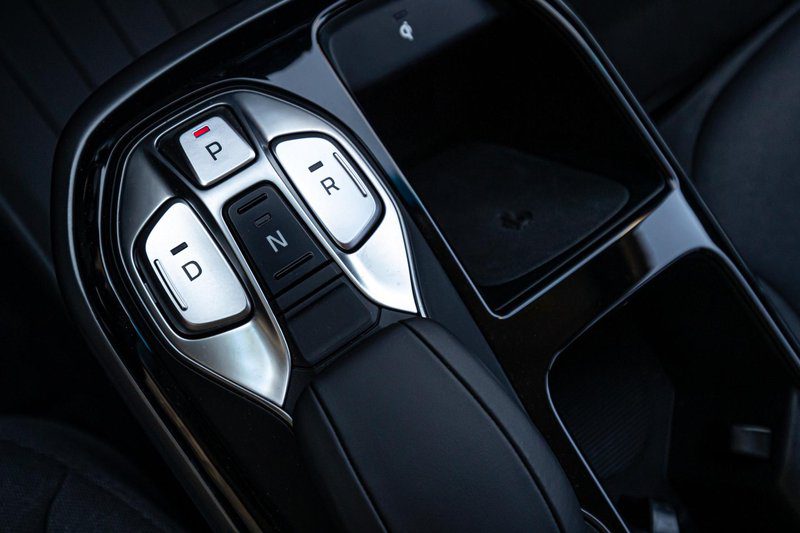
Test Brief: Hyundai Ioniq EV Premium (2020) // These are the trump cards that convince the latest Hyundai electrician
It's been eight years since the launch of the first true electric vehicles, and the Ioniq EV has been on sale for three years now. In fact, Hyundai's first South Korean brand traditionally reacts quickly to any emerging trends. This is why it is now an updated version. Compared to the first one tested in our country, there are noticeable changes in the hardware.
Hyundai primarily aimed to increase the range of the vehicle, it is now for WLTP standard 311 km... They managed to achieve this due to a slightly larger battery capacity (38,3 kWh), as well as by reducing the maximum power of the drive motor from 120 kW to 100. But the maximum rated torque of 295 Nm remained unchanged, so at least after Feels like the capabilities of the current version of Ioniq have not deteriorated significantly.
The overall experience of using this electric vehicle is satisfactory, although the driver must first become familiar with the way of driving that allows him to conserve electricity as easily as possible for a longer mileage. Hyundai has solved this problem with a fairly extensive program of information that the driver can get from the center screen to help control the softer gas pressure.

Using the levers on the steering wheel, the driver can also choose how much regenerative power we can recover during deceleration. At the highest regeneration level, you can also customize your driving style so that you can only use the brake pedal when stopping as a last resort., otherwise everything is regulated only by pressing or removing the gas.
Ioniq EV has proven itself well, especially when driving in the city and mixed urban and suburban routes, and the faster "leakage" of electricity from the battery is most affected by driving at the maximum permitted speed on the highway (then the consumption is from 17 to 20 kilowatt hours per 100 km).
And here the excellent aerodynamic coefficient Ioniq (Cx 0,24) cannot prevent an increase in consumption. Overall, the Ioniq stands out the most for its looks. Those who are more negative can comment on its form.that Hyundai has tried too much to follow the Toyota Prius (or does anyone else remember the Honda Insight?).

However, the particular appearance doesn't bother me too much, but it is true that in fact it can be argued that it is the Ioniq that is very different from the overall design orientation of the South Korean brand. As mentioned, with a drop shape, they have achieved a satisfactory aerodynamic shape, which is actually a rarity among battery-powered EVs.
On the other hand, this search for a suitable expression of form is not even reflected in the interior too much. The space for the driver and passengers is suitable, and there is a little less space for luggage. But even here, the "classic" sedan design allows for more luggage to be carried with the upside-down rear seats. The driver's compartment is beautifully designed, with a large center display and buttons on the center console between the front passengers that replace the gear lever.
The Ioniq Premium equipment used in our test car is average. But it must be said that in fact it already includes almost everything that a driver needs for real well-being while driving. First of all, the Ioniq EV is richly equipped with various safety features - electronic driving assistants. Active cruise control, for example, allows you to stop automatically in a convoy, and the driver then invokes the auto-follow setting by simply moving it again while gently depressing the accelerator pedal.

Radar cruise control is part of what Hyundai calls Smart Sense and also takes care of lane keeping, automatic emergency braking (with pedestrian and cyclist detection) and driver attention control. Excellent night-time driving safety is also enhanced by the LED headlights. In general, driving comfort on most road surfaces appears to be acceptable.
The same is true for driving position, where the car's low center of gravity also comes to the fore (of course, due to the greater weight of the battery in the underbody of the car. It is true, however, that in borderline cornering conditions, the electronic protection system (ESP) responds very quickly.... The handling of this tested model appeared to be much better than two years ago, otherwise it contributes accordingly to a good driving experience.
Hyundai has also prepared three driving profiles for the Ioniq EV, but it seems that after an initial enthusiasm for finding the best fit for most of the driving, we are using the Eco-labeled profile. The Sport may be the least suitable for normal use, but with it we can “encourage” the Ioniq's character to be economical and easy to drive over short distances.
Of course, electric cars rarely make it to gas stations, and it seems that gas stations are very heavily besieged, at least in Ljubljana. The Ioniq has a great notification system for where to find the nearest public charging station, but there is no add-on to let you know if it's free or busy.. Otherwise, you can charge until the battery is properly charged in about an hour. Also for other reasons, the first thing is definitely comfort, the best way to restore energy in the Ioniq battery is to charge it at home, who, of course, can do this.

But I recommend every new EV owner to invest extra in their own charging station, especially if it's an Ioniq. Charging while connected to a “normal” home electrical outlet takes a long time. At a home charging point with a capacity of 7,2 kilowatts, this is just over six hours, and when connected to a home power source through an outlet, up to 30 hours. The test experience is slightly better, with the Ioniq EV with 26 percent of the available battery power being charged overnight in just over 11 hours.
And how quickly does it end again? The fastest, of course, when driving at maximum speed, as already mentioned. However, with moderate driving, it can be reduced to less than 12 kWh, however, on our standard circuit this averages 13,6 kWh per 100 km.
Hyundai Ioniq EV Premium (2020 .)
Basic data
| Sales: | AC Mobile doo |
|---|---|
| Test model cost: | 41.090 € |
| Base model price with discounts: | 36.900 € |
| Test model price discount: | 35.090 € |
| Power: | 100kW (136 KM) |
| Acceleration (0-100 km / h): | 9,9 with |
| Maximum speed: | 165 km / h |
| Mixed flow ECE: | 13,8 kW / hl / 100 km |
Costs (per year)
Technical information
| engine: | electric motor - maximum power 100 kW (136 hp) - constant power np - maximum torque 295 Nm from 0-2.800 / min. |
|---|---|
| Battery: | Lithium-ion - nominal voltage 360 V - 38,3 kWh. |
| Energy transfer: | the engine is driven by the front wheels - 1-speed automatic transmission. |
| Capacity: | top speed 165 km/h - 0-100 km/h acceleration 9,9 s - power consumption (WLTP) 13,8 kWh / 100 km - electric range (WLTPE) 311 km - battery charging time 6 h 30 min 7,5 .57 kW), 50 min (DC from 80 kW to XNUMX%). |
| Mass: | empty vehicle 1.602 kg - permissible gross weight 1.970 kg. |
| External dimensions: | length 4.470 mm – width 1.820 mm – height 1.475 mm – wheelbase 2.700 mm – |
| Box: | 357-1.417 liters |
evaluation
The electric Ioniq is a good choice, but of course, assuming you're willing to pay more for the future, i.e. electric drive, than you need for current fossil fuel vehicles.
We praise and reproach
ride and use
satisfactory driving comfort
impression of solid workmanship
inductive charging of mobile phones
four charge levels / the ability to control only the accelerator pedal
rich standard equipment
two charging cables
eight-year battery warranty
long battery charging time
opaque body
